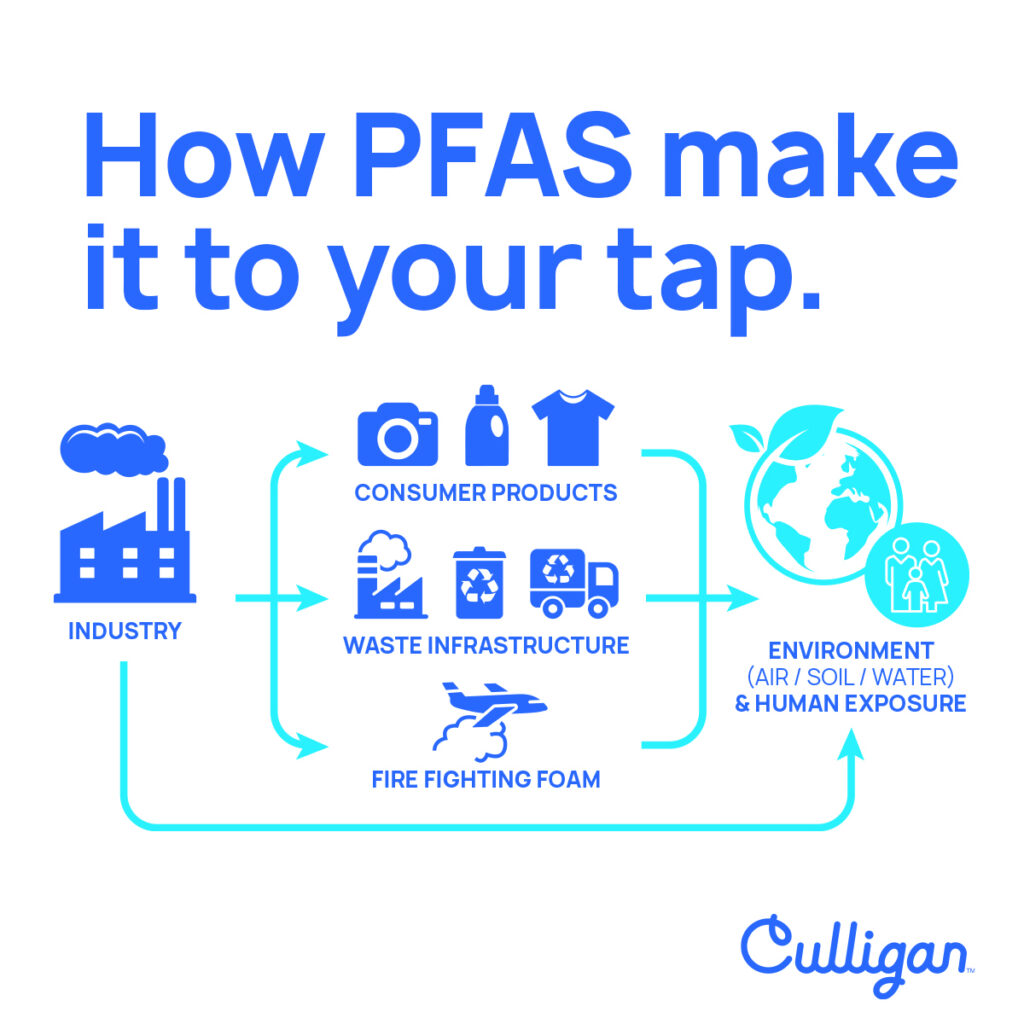Does St. Petersburg Water Have PFAS?
Quick Summary: St. Petersburg’s water currently shows no PFAS above federal detection limits, but ongoing UCMR5 testing is evaluating 29 PFAS compounds. Learn how PFAS enter local water systems, why they matter for health, and how advanced filtration like reverse osmosis can help protect your home.
PFAS, or per- and polyfluoroalkyl substances, have become one of the most talked-about contaminants in U.S. water systems. Often called “forever chemicals” because they do not break down easily, PFAS can remain in the environment for decades and have been linked to a range of health issues. Across Florida’s Gulf Coast, utilities are under increasing pressure to monitor and manage PFAS contamination, and St. Petersburg is no exception.
So, does St. Petersburg’s water have PFAS? According to recent testing, no PFAS have been detected above the minimum reporting limits in the city’s water supply. However, the city is actively testing under new federal monitoring programs, and trace levels of PFAS are still a concern nationwide. Here’s what you need to know about how PFAS enter water systems, what the current data says, and what residents can do to protect themselves.
How Do PFAS Enter St. Petersburg’s Water Supply?
PFAS have been widely used in consumer and industrial products since the 1940s. Nonstick pans, stain-resistant fabrics, firefighting foams, and even certain food packaging have historically contained PFAS. Once these chemicals are produced or discarded, they can migrate into local water systems.
For coastal regions like St. Petersburg, the biggest contributors to PFAS contamination include:
- Industrial runoff: Factories and plants that once used PFAS in manufacturing processes can leave behind contamination that seeps into surface and groundwater.
- Stormwater and urban runoff: Heavy rain events common to Florida wash PFAS-containing materials from roads and urban surfaces into water reservoirs.
- Firefighting foams: Military bases, airports, and firefighting training sites are known sources of PFAS runoff into local aquifers.
- Legacy contamination: Even if PFAS use has decreased in recent years, these “forever chemicals” remain in soil and groundwater for decades.
Because St. Petersburg is part of the greater Tampa Bay water system, runoff and environmental contamination from surrounding areas can also influence the water quality.
What Do Current Tests Show About PFAS in St. Petersburg Water?
According to the city’s most recent participation in the EPA’s monitoring programs, no PFAS compounds were detected above the minimum reporting thresholds. This is encouraging news for residents, but it doesn’t mean the city is free from PFAS entirely—it simply means that levels are currently below the limits detectable by the testing methods used.
Understanding UCMR3 vs. UCMR5 Testing
The EPA’s Unregulated Contaminant Monitoring Rule (UCMR) programs are designed to track emerging contaminants like PFAS before federal enforceable limits are set.
- UCMR3 (2013–2015): St. Petersburg’s water was tested for six PFAS compounds—PFOS, PFOA, PFNA, PFHxS, PFHpA, and PFBS. None were detected above the EPA’s minimum reporting levels.
- UCMR5 (2023–2024): This expanded testing now includes 29 PFAS compounds and is capable of detecting even lower concentrations. St. Petersburg’s Water Resources Department is participating in this program, with tests occurring every three months through April 2024.
The data collected from UCMR5 will help determine if federal PFAS limits need to be tightened further, and St. Petersburg’s results will be part of this national database.
Why Are PFAS a Concern for Health?
While St. Petersburg’s PFAS levels are currently low, research from the EPA and CDC suggests that long-term exposure to PFAS can lead to health risks, including:
- Elevated cholesterol levels
- Suppressed immune response
- Hormonal disruptions
- Increased risk of kidney and liver problems
- Certain cancers (based on long-term studies of high PFAS exposure)
These risks are why both federal and state agencies are paying close attention to PFAS levels, even when they appear in very small concentrations.
Are There PFAS Regulations in Florida?
Florida currently follows the EPA’s federal guidelines for PFAS, but state officials have acknowledged that PFAS will likely be more tightly regulated in the coming years.
Several Florida cities—including areas near St. Petersburg—are upgrading treatment systems in anticipation of new requirements.
St. Petersburg’s water provider, Tampa Bay Water, is committed to proactive monitoring. This includes exploring treatment options like granular activated carbon (GAC) and reverse osmosis (RO), both of which are recommended by the EPA for PFAS removal.
What Can St. Petersburg Residents Do?
While municipal water currently meets all safety standards, many residents choose to take additional steps for peace of mind. Home water testing and filtration systems can provide an extra layer of protection.
Reverse Osmosis (RO): RO systems use a semipermeable membrane to remove a wide range of contaminants, including PFAS, lead, nitrates, and other harmful substances.
Whole-House Filtration: For households that want improved water quality for every faucet, whole-home filters with GAC can reduce PFAS and improve taste, smell, and clarity.
Regular Water Testing: Homeowners concerned about “forever chemicals” should schedule regular water testing to track changes in local water quality over time.
Will PFAS Become a Bigger Issue in the Gulf Coast?
PFAS contamination is a growing topic across Florida, especially near coastal areas where runoff, urban development, and legacy contamination all intersect. While St. Petersburg’s current results show no alarming PFAS levels, new federal regulations and stricter EPA thresholds mean local utilities will continue to adapt. Residents can take proactive steps now to stay ahead of these changes.
Conclusion: Should You Be Worried About PFAS in St. Petersburg Water?
Right now, the city’s water supply is in compliance with all current guidelines, and no PFAS have been detected above federal thresholds. However, PFAS remain a widespread environmental challenge, and ongoing testing is critical to maintaining safe drinking water. If you want added protection, consider an in-home reverse osmosis or whole-home filtration system.

